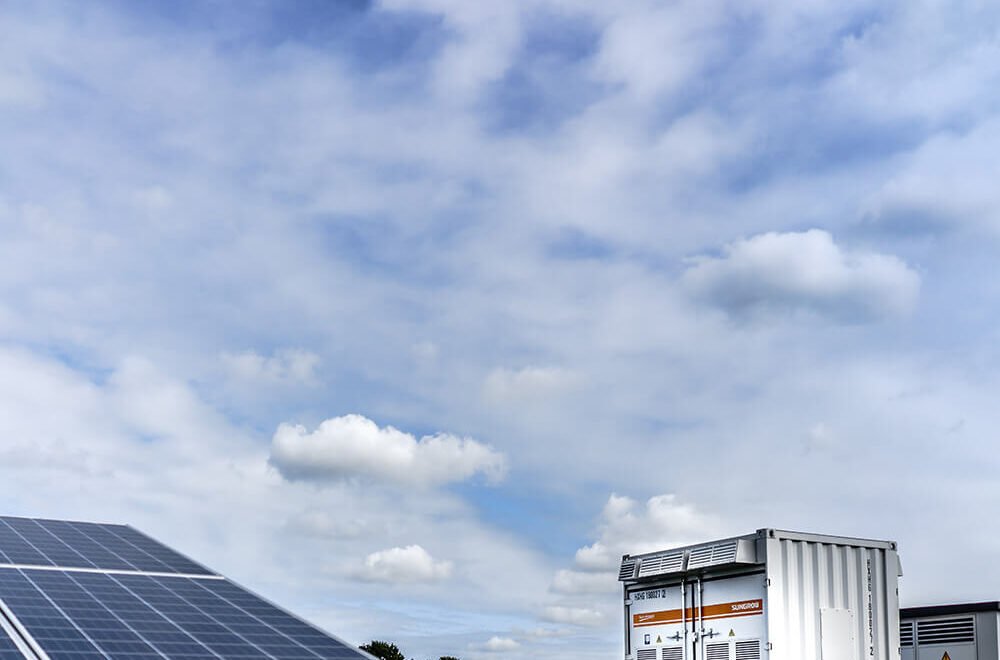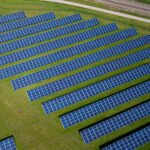Inverter, also known as power conditioner and power regulator, is an essential part of the PV system. The most important function of the PV inverter is to convert the DC power generated by the solar panel into AC power used by home appliances. All the electricity generated by the solar panel has to be processed by the inverter to be output to the outside. Through the full-bridge circuit, generally using SPWM processors through modulation, filtering, boosting, etc., to get sinusoidal alternating current matching the lighting load frequency, rated voltage, etc. for the system end-users to use. With the inverter, a DC battery can be used to provide AC power to the appliances.
What Is Solar Inveter
Solar AC power generation system is composed of solar panels, a charge controller, an inverter, and a battery together; solar DC power generation system does not include inverter. The process of converting AC energy into DC energy is called rectification, the circuit that performs the rectification function is called rectification circuit, and the device that realizes the rectification process is called rectification equipment or rectifier. In contrast, the process of converting DC energy into AC energy is called inverting, the circuit that performs the inverting function is called inverting circuit, and the device that realizes the inverting process is called inverting equipment or inverter.
Solar Inverter Function
The inverter not only has the function of direct AC conversion but also has the function of maximizing the function of solar cells and the system fault maintenance function. In summary, there are active operation and shutdown function, maximum power tracking and control function, anti-alone operation function (for the grid-connected system), active voltage adjustment function (for the grid-connected system), DC detection function (for the grid-connected system), DC ground detection function (for the grid-connected system).
Here is a brief introduction to the active operation and shutdown function and the maximum power tracking and control function.
Active operation and shutdown function
After sunrise in the morning, the solar radiation intensity gradually strengthens, and the output of the solar cell increases, and when it reaches the output power required for the task of the inverter, the inverter starts to operate actively. After entering into operation, the inverter will watch the output of the solar cell module every moment. As long as the output power of the solar cell module is greater than the output power required by the inverter, the inverter will continue to operate; until sunset, the inverter can also operate even on rainy days. When the output of the solar cell module becomes smaller and the inverter output is close to 0, the inverter will constitute a standby form.
Maximum power tracking and control function
The output of the solar cell module changes with the intensity of solar radiation and the temperature of the solar cell module itself (chip temperature). In addition, because the solar cell module has the characteristics of voltage decreasing with the increase of current, there is the best task point to obtain the maximum power. The solar radiation intensity is shifting, so obviously the optimal task point is also shifting. In relation to these shifts, the task point of the solar cell module is always at the maximum power point, and the system always obtains the maximum power output from the solar cell module, and this control is the maximum power tracking control. The most important feature of inverters for solar power systems is the inclusion of the maximum power point tracking (MPPT) function.
Common Inverter Types
Ordinary Inverter
DC 12V or 24V input, AC 220V, 50Hz output, power from 75W to 5000W, some models have AC and DC conversion that is UPS function.
Inverter/Charger Integrated Machine
In this type of inverter, users can use various forms of power supply for AC loads: when AC power is available, AC power is used to power the load through the inverter, or to charge the battery; when there is no AC power, the battery is used to power the AC load. It can be used in combination with various power sources: such as batteries, generators, solar panels, and wind turbines.
Common Inverter Waveforms
Square Wave Inverter
The output AC voltage waveform of a square wave inverter is a square wave. The inverter lines used in these inverters are not exactly the same, but the common feature is that the lines are relatively simple and the number of power-switching tubes used is small. The design power is usually between a hundred watts and a kilowatt. The advantages of square wave inverters are simple wiring and cheap and easy maintenance. The disadvantage is that the square wave voltage contains a large number of high harmonics, which will produce additional losses in load appliances with core inductors or transformers, and interfere with radios and some communication equipment. In addition, this type of inverter also has a regulating range that is not wide enough, the protection function is not perfect, the noise is relatively large, and other disadvantages.
Sine Wave Inverter
The AC voltage waveform output from a sine wave inverter is a sine wave. The advantages of a sine wave inverter are good output waveform, very low distortion, low interference to radio and equipment, and low noise. In addition, the protection function is complete, and the efficiency of the whole machine is high. The disadvantages are: the wiring is relatively complex, has high maintenance technology requirements, and is more expensive.
Use and Maintenance
Use
- Connect and install the equipment in strict accordance with the requirements of the inverter use and maintenance manual. During installation, check carefully: whether the wire diameter meets the requirements; whether the parts and terminals have been loosened during transportation; whether the insulated places are well insulated; whether the grounding of the system meets the regulations.
- The inverter should be operated and used in strict accordance with the provisions of the instruction manual for the use and maintenance of the inverter. In particular: pay attention to whether the input voltage is normal before turning on the power; pay attention to whether the sequence of switching is correct and whether the indication of each meter and indicator is normal when operating.
- Inverter generally has automatic protection against circuit break, over-current, over-voltage, overheating, etc. Therefore, when these phenomena occur, there is no need to stop manually; the protection point of automatic protection is generally set at the factory, so there is no need to adjust it again.
- Inverter cabinet with high voltage, the operator generally shall not open the cabinet door, the cabinet door should be locked normally.
- When the room temperature exceeds 30℃, heat dissipation and cooling measures should be taken to prevent equipment failure and prolong the service life of the equipment.
Maintenance and repair
- The wiring of each part of the inverter should be checked regularly to see if it is solid and loose, especially the fan, power module, input terminal, output terminal, and grounding should be checked carefully.
- Once the alarm is shut down, do not start the machine immediately, you should find out the reason and repair it before starting the machine.
- Operators must be specially trained to determine the causes of general faults and be able to troubleshoot them, for example, to skillfully replace fuses, components, and damaged circuit boards. Without training, personnel must not be on duty to operate the equipment.
- If an accident occurs that is not easy to eliminate or the cause of the accident is unclear, a detailed record of the accident should be made and the inverter manufacturer should be notified in time to solve the problem.





2 Comments
Very informative overview of solar energy. Thanks for sharing this valuable information!
A solar inverter, or power conditioner, is essential in solar power systems as it converts the direct current (DC) generated by solar panels into alternating current (AC) for household use. It maximizes energy output through Maximum Power Point Tracking (MPPT) and manages power flow in grid-connected systems, ensuring safety and efficiency. Common types include ordinary inverters, which are simple and affordable, and sine wave inverters, known for their high performance and low distortion. Proper installation and maintenance are crucial for optimal operation, making a quality solar inverter a key investment for any solar energy setup.